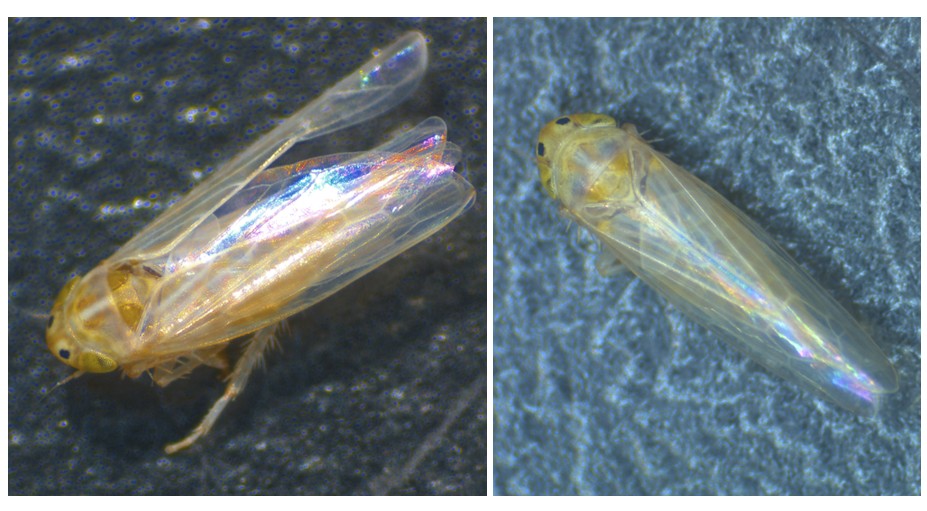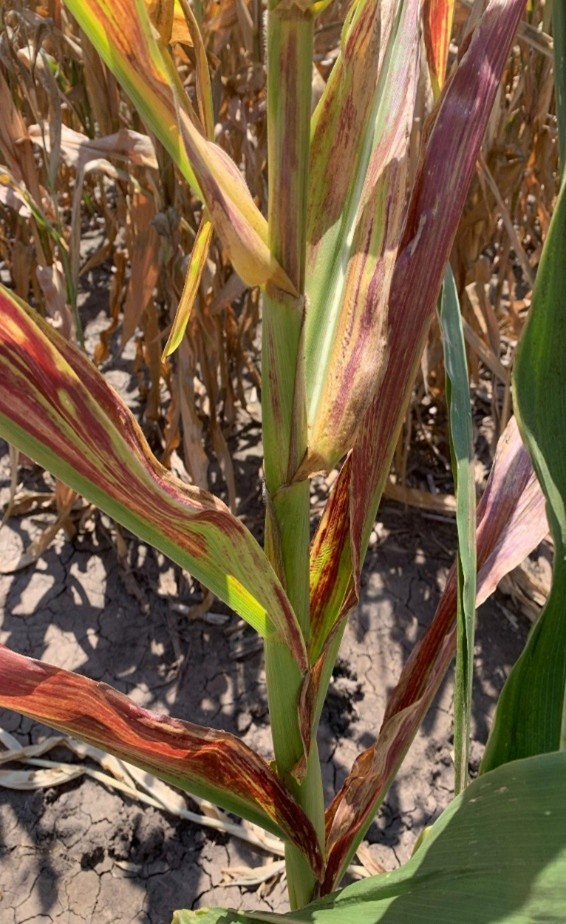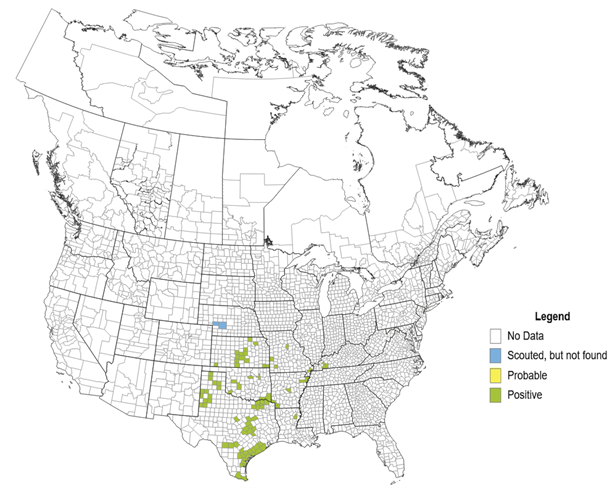Corn Leafhopper Detected in Kentucky Corn in 2025
Corn Leafhopper Detected in Kentucky Corn in 2025

Current Status
Corn leafhopper has been confirmed in Kentucky corn as of mid-July 2025. The corn leafhopper, Dalbulus maidis (Hemiptera: Cicadellidae), has become a major pest in corn fields across South and Central America due to its ability to transmit plant pathogens. It is the primary vector of corn stunt spiroplasma (Spiroplasma kunkelii), maize bushy stunt (MBS) phytoplasma, and maize rayado fino virus (MRFV), which are associated with the disease corn stunt.
Corn leafhopper was first detected in 2024 in a suction trap at the University of Kentucky’s Research and Education Center in Princeton (western Kentucky). In 2025, corn leafhoppers have been identified on yellow sticky traps and direct visual inspections in commercial fields in Caldwell, Christian, and Trigg counties. However, corn leafhoppers have not been found in yellow sticky traps placed in commercial fields in Daviess, Henderson, and Wayne counties so far this year.
Corn Leafhopper Description
Adult corn leafhoppers are about 1/8 inch long and range in color from pale yellow to white. A key distinguishing feature that helps differentiate them from other leafhopper species commonly found in corn is the presence of two dark spots surrounded by whitish halos, located between the eyes (Figure 1). Corn leafhoppers will have white veins on their wings, light abdomens and no facial markings.
Damage to Corn

Corn leafhoppers are sap-feeding insects, and they can cause significant direct damage if populations are high. However, the main issue is that the corn leafhopper is capable of transmitting the pathogens that cause corn stunt.
Although the corn leafhopper has been confirmed in Kentucky, the disease corn stunt has not yet been confirmed in 2025. In fact, although corn leafhoppers have been detected across southern and mid-south states, corn stunt has only been confirmed in one county in Arkansas. https://cropprotectionnetwork.org/maps/corn-stunt-pathogens
Symptoms of corn stunt include stunted plants and malformed or small ears. Leaves of affected plants can appear reddish in color (Figure 2). Corn stunt is easy to confuse with other corn disorders, including drought stress and nutrient deficiencies. Ear damage or other issues that prevent sugar accumulation in the ear will result in anthocyanin accumulation or red discoloration of the leaves, which can also be confused with corn stunt.
The combined effects of corn leafhopper feeding and the transmission of plant pathogens can cause substantial losses in corn productivity and quality. In central Brazil, where corn leafhoppers are prevalent, 10 to 60% of plants showing disease symptoms—predominantly due to maize bushy stunt phytoplasma—were observed in non-irrigated corn fields. In irrigated fields, 65 to 100% of corn plants were infected, leading to total yield loss in some areas in 1998.
Management
In Kentucky, management of corn leafhopper and corn stunt are not needed at this time. Due to Kentucky's cold winters, the presence of corn leafhoppers in the state is usually the result of migration from states to our south. Migration of the corn leafhopper can be annually monitored at the corn leafhopper map: (Figure 3). This map reports the date corn leafhoppers were reported in each state and allows stakeholders to track the northward movement of the leafhopper from May in Texas to western Kentucky in mid-July. (late July). By the time corn leafhoppers reached Kentucky in mid-July, corn planted within the regular planting window (around April–May) in Kentucky would be unlikely to experience major yield loss from corn leafhoppers and corn stunt.
Corn leafhoppers and corn stunt are more concerning when detected in late-planted or young corn. Infections that occur in vegetative (V) stages are more likely to result in yield loss. Therefore, monitoring corn leafhoppers during the early growth stages (up to V8–V10) is one of the most important steps in disease management. If the corn leafhopper is detected before V8-V10 insecticide application(s) may be necessary.
The University of Kentucky Entomology and Plant Pathology programs are collaborating with other universities across the United States in a project to track corn leafhoppers and detect the pathogens that cause corn stunt, and assess their potential impact in Kentucky. If corn stunt is suspected, submit samples to your County Extension Agent for submission to the Plant Disease Diagnostic Laboratory.

More Information
- Biology and Management of Corn Leafhopper (University of Missouri)
- Corn Stunt: Identification, Distribution and Management (CPN)
- Corn Leafhopper Leads to Corn Stunt Disease Across Oklahoma (Oklahoma State University, August 12, 2024)
- Lagos-Kutz, D.M., et al. 2025. First Report of Corn Leafhopper (Hemiptera: Cicadellidae) in the USA Midwest Suction Trap Network. 2025. Insecta Mundi 1110: 1–10. Published: February 28, 2025.
| Citation: Villanueva, R., Batista. F., Wise, K., 2025. Corn Leafhopper Detected in Kentucky Corn in 2025. Kentucky Field Crops News, Vol 1, Issue 8. University of Kentucky, August 15, 2025. |
 |
 |
 |
